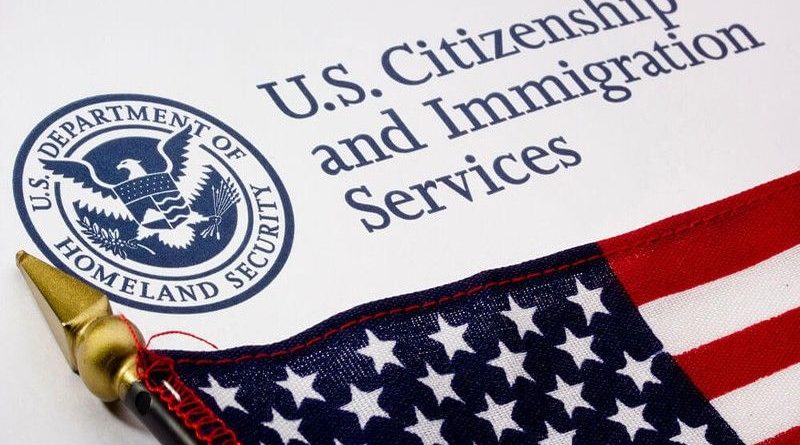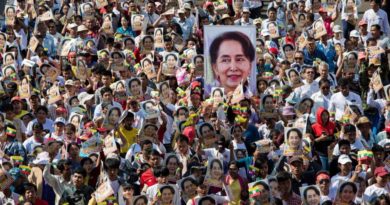OP-ED: USA IMMIGRATION- Visa processing dates and price of waiting

MILLIONS of visa watchers all over the world must share my observation that of late, the US State Department has been publishing the monthly Visa Bulletin later than usual.
In the years that I have been monitoring the movement of priority dates, the monthly report usually comes out between the 10th and 12th of every month.
Now, the Bureau of Consular Affairs put it out after the 15th. This time, the January 2020 visa bulletin came out on the 18th of December, Philippine time.
ADS by Cloud 9:
.
– SPACE RESERVE FOR YOUR ADVERTISEMENT –

The waiting must be causing anxiety for countries with oversubscribed status: there are more applicants than the country allocation. The per-country quota is 25,620. The Philippines is competing with others for the 226,000 yearly totals worldwide.
ADS by Cloud 9:
.
– SPACE RESERVE FOR YOUR ADVERTISEMENT –

So, if there are more takers than available visas, a cut-off is set. Those who make it on time are issued interview notices by the National Visa Center (NVC). The applicants who have paid the visa fees ($120 for the affidavit of support and $325 for each applicant) and uploaded their documents to their specific NVC database case assignment are given interview schedules. For Filipinos, it is the US Embassy in Manila.
ADS by Cloud 9:
.
– SPACE RESERVE FOR YOUR ADVERTISEMENT –

Waiting time gets longer
Much like the rabbit in a battery commercial, the wait keeps getting longer, and longer…and longer.
From the time a petition (for a relative, or for a worker under the employment-preference categories), the wait could be up to 20 years – for a US citizen sponsoring a sibling.
And that’s only from the time the NVC receives a petition approved by the US Citizenship and Immigration Services (Uscis).
Currently, a petition of a US citizen for an unmarried son over 21 is first filed with the specified Uscis Lockbox facility. The location depends on where the petitioner’s address in the US is when the petition is submitted.
The Uscis Lockbox facilities located in Chicago, Illinois; Phoenix, Arizona; and Lewisville, Texas, are operated by a Department of Treasury-designated financial agent.
The petition is checked for completeness — the correct fee, supporting documents and a cover letter, if any. Once assessed as complete, the file is then forwarded to a Uscis adjudication center. Most petitions for relatives are sent to the California Service Center. In case there are more cases than there are adjudicators, some files are moved to another service center to ease backlogs. Lately, the Potomac Service Center has been added as a destination for petitions.
Upon receipt at a service center, a case is assigned to an evaluator, who then puts the case at the end of the line or at the bottom of the pile. According to the Uscis, the agency receives 3,700 petitions daily.
How long does a petition stay at the Uscis?
From time of receipt to approval, the process could take up to 131.5 months. That is approximately a 10-year wait for the petition of a US citizen for a brother or a sister. And that’s only in the Uscis processing stage at the California Service Center (CSC).
The other cases being processed at the CSC are petitions of :
— Permanent residents (green card holders) for spouse or child under 21 (F2A category) — wait is 14 to 18 months. CSC is processing F2A cases received on or earlier than July 11, 2018.
— US citizens for unmarried son or daughter over 21 (F1): waiting period, 49 to 63.5 months. Cases received from Oct. 9, 2014 are being processed.
— Green card holders filing for unmarried son or daughter over 21 (F2B category), the wait is 51.5 to 67 months. Only cases received on or before June 27, 2014 are undergoing review.
— US citizens for married sons/daughters — cases before May 31, 2010 are being evaluated. The wait is 89.5 to 116.5 months.
Cases sent from a lockbox facility to the Potomac Service Center seem to have better luck.
— 21.5 months to 28 months for a permanent resident filing for a spouse or child under 21 for petitions received on or earlier than Sept. 3, 2017
ADS by Cloud 9:
.
– SPACE RESERVE FOR YOUR ADVERTISEMENT –

 — 7.5 months to 9.5 months for US citizen filing for a spouse, parent, or child under 21: March 21, 2019
— 7.5 months to 9.5 months for US citizen filing for a spouse, parent, or child under 21: March 21, 2019
— 7.5 months to 9.5 months for US citizen filing for an unmarried son or daughter over 21: March 21, 2019
— 21.5 months to 28 months for permanent resident filing for an unmarried son or daughter over 21: Sept. 3, 2017
— 7.5 months to 9.5 months for US citizen filing for a married son or daughter over 21: March 21, 2019
ADS by Cloud 9:
.
– SPACE RESERVE FOR YOUR ADVERTISEMENT –

Second waiting stage
After approval, the cases are forwarded to the National Visa Center (NVC) where the new batch are queued, according to categories. These petitions then take their places in line, according to the date of receipt at the Uscis.
So, the petition of a US citizen for a married son or daughter received on May 31, 2010 at the California Service Center would have to check the cut-off date of the F3 category in the monthly Visa Bulletin.
For January 2020, the cut-off date for F3 category for the Philippines is Jan. 1, 1999.
Add the nine years an F3 petition received on May 31, 2020 needs to complete processing and the waiting period virtually seems like an eternity.
The rest of the categories, including the employment-based petitions are shown in the accompanying charts for Philippine applicants only.
The final action dates mean the applicant with a cut-off date on or earlier than that shown in the chart should have completed processing at the NVC stage.
ADS by Cloud 9:
.
– SPACE RESERVE FOR YOUR ADVERTISEMENT –

The dates for filing chart on the other hand indicates an applicant in a specific category may start visa processing, i.e., payment of fees and uploading of documents.
If a year passes without the applicant acting, the visa petition faces the probability of termination. Back to square one. All the years of waiting wasted.
Applicants for Australia, New Zealand share the same slow processing times with the US– both in the family and skilled worker category: Spouse/partner or child — 21 to 32 months.
As of December 2019, sponsorship for parents show the final processing dates:
— Contributory parent visa applications with a queue date up to November 2015
— Parent visa applications with a queue date up to August 201
— Aged parent visa applications with a queue date up to May 2012
New Zealand shows processing of partners to be completed in 10 months for 90 percent of the cases. For skilled migrants (the equivalent of the US’ employment-based category), the wait is approximately 14 months.
For parents, there is a new limit to parent sponsorship to only 1,000. The sponsorship is currently closed. Reopening will be announced next year.
In addition, the son or daughter sponsor must meet a new (higher) financial requirements for sponsors. The previous two-tier system has been changed to a single system.
The expected income level for 2020 is NZ$106,080 to sponsor one parent and NZ$159,120 to sponsor two parents. If the sponsor is using the income of the son/daughter and his/her partner/spouse, the income level is set at NZ$159,120 for one parent and NZ$212,160 for two parents.
The income level is the counterpart for US sponsors submitting an affidavit of support. The income level depends on the number of members in the sponsor’s household, not on the sponsor’s income level.
The prevailing mood for these governments seems to be, let them wait, and/or let them pay the price.


 All photographs, news, editorials, opinions, information, data, others have been taken from the Internet ..aseanews.net |
All photographs, news, editorials, opinions, information, data, others have been taken from the Internet ..aseanews.net | 






